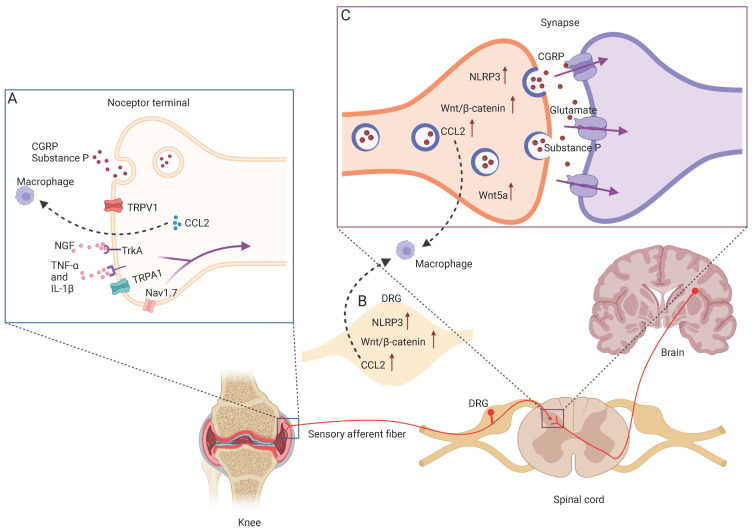Figure 1.
Overview of OA pain transmission and associated signaling pathways. (A). Peripheral terminals of nociceptors contain a variety of transducing channels that convert harmful stimuli into electrical activity, and thus action potentials in nociceptors that travel back to the central nervous system. In the event of painful stimulatory factors such as NGF, TNFα, and IL-1β acting on their receptors, ion channels such as TRPV1 and Nav1.7 are activated to transmit a pain signal and CCL2 expression, and are upregulated to recruit macrophage. (B). Cell bodies of nociceptors are located in the dorsal root ganglion. Increased expression of NLRP3, Wnt/β-catenin, CCL2, Wnt5a in DRG in chronic pain states. (C). Nociceptive signals are transmitted at a central synapse in the spinal cord through the release of a variety of excitatory neurotransmitters, such as glutamate, CGRP, or substance P, which could excite second-order nociceptive projection neurons. NLRP3, Wnt/β-catenin, CCL2, and Wnt5a expression is upregulated in presynaptic neurons.

